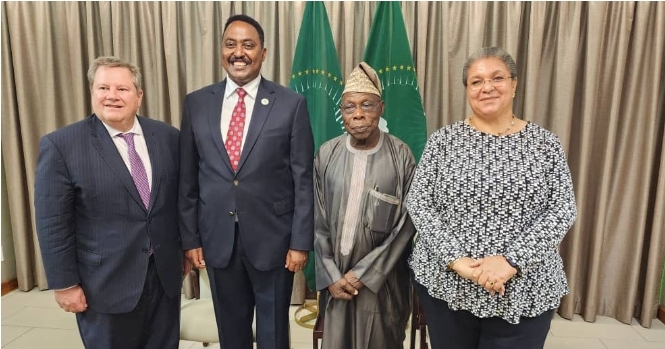On Wednesday, an agreement was struck to put an end to the two-year impasse between the Ethiopian government and the Tigray People’s Liberation Front.
Olusegun Obasanjo, the chief mediator for the African Union and a former president of Nigeria, was quoted by VOA as saying that “the two parties in the Ethiopian conflict have formally agreed to the halt of hostilities as well as the systematic, orderly, smooth and coordinated disarming.”
After earlier attempts at peace negotiations failed, the warring parties arrived in South Africa on Monday. The discussions were supposed to continue until today but were extended to October 30. (Wednesday)
Mr. Obasanjo, former president of Kenya Uhuru Kenyatta, and Phumzile Mlambo-Ngcuka, a former vice president of South Africa, coordinated the negotiations.
Representatives from the Intergovernmental Authority on Development (IGAD), the UN, and the US were there to observe the proceedings.
Ethiopian Prime Minister Abiy Ahmed reportedly remarked, “As we’re completing the fight in the north with triumph, we have to bring peace, development, and assure Ethiopia’s prosperity, so we make those forces that (create) discord among Ethiopians from afar feel humiliation,” according to the VOA.
“If a victory found in war isn’t repeated in peace, if the peace found through victory isn’t repeated with prosperity, Ethiopia’s existence/sovereignty will inevitably be violated one way or another,” he added.
The Executive Secretary of the Intergovernmental Authority on Development (IGAD), Workneh Gebeyehu, congratulated both parties on the signing of the Cessation of Hostilities Agreement. He said, “by signing this agreement to silence the guns and end the armed conflict, the people of Ethiopia now have the opportunity to establish a long-lasting peace.”
For two years, the government of Ethiopia and forces in its northern Tigray region have been at loggerheads, throwing the country into political and economic instability
Eritrean soldiers are also fighting in Tigray for the Ethiopian government. All sides have been accused of atrocities.
Several factors are said to be contributing to the seemingly unending crisis.
According to the UN Refugees agency (UNHCR), Ethiopia is the third largest refugee-hosting country in Africa, home to over 924,000 refugees and asylum seekers — mainly from South Sudan, Somalia and Eritrea.
The ongoing conflict killed thousands and internally displaced millions of Ethiopians. An estimated 59,000 people fled Ethiopia to find refuge in eastern Sudan.
Millions of Ethiopians are still in desperate need of humanitarian aid and protection. An estimated 9 million people across Ethiopia’s conflict-stricken regions of Tigray, Afar and Amhara lack access to adequate food, according to the UN.
In Tigray, nearly 40 per cent of the population is suffering from a lack of food. In addition to severe food insecurity, gender-based violence has increased significantly. Also, women and children lack access to proper healthcare, social welfare and justice services, the UN has said.
Amidst the conflict in the Tigray region, international NGOs and aid groups faced difficulties in delivering critical humanitarian aid and vital services. A shortage of fuel, supplies and cash has forced several aid groups to reduce or cancel distributions of food, water and medicine.

